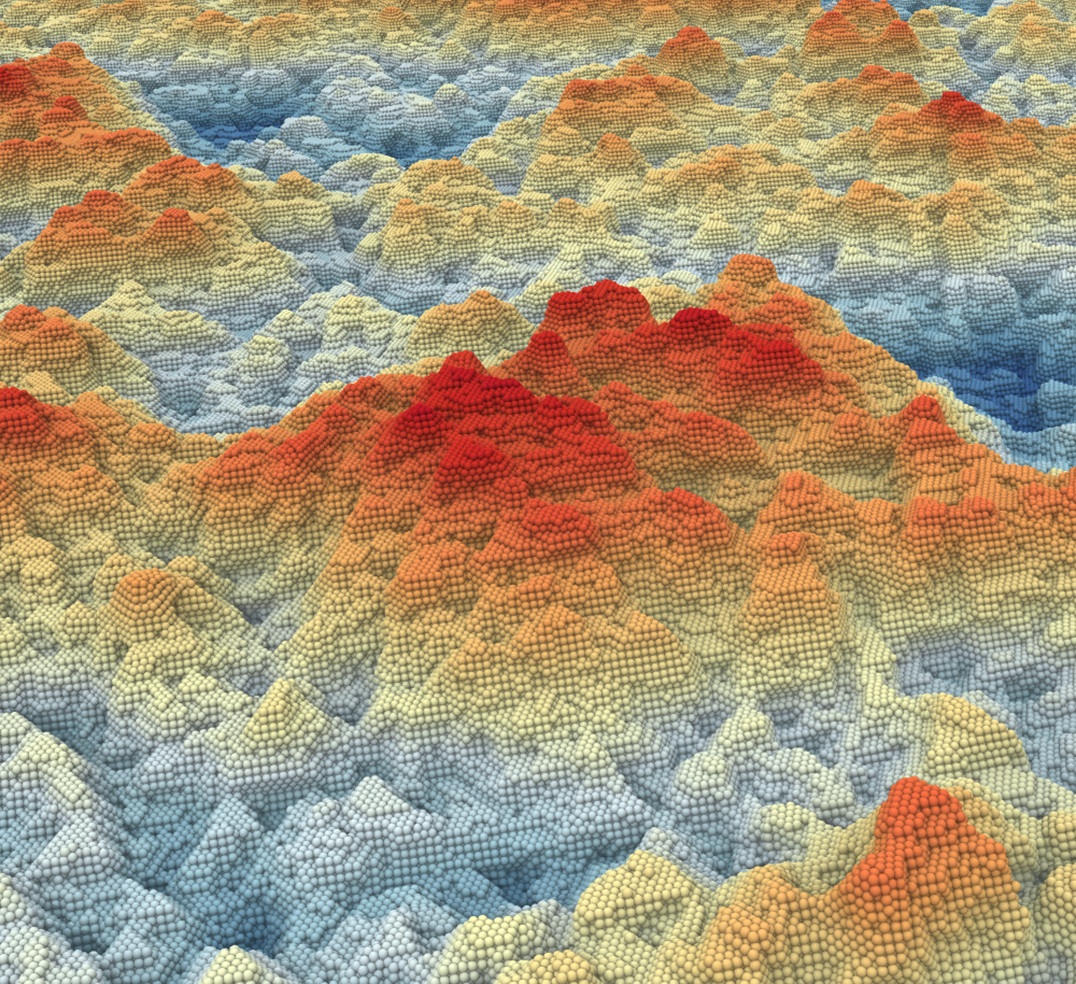News & Presse
A Diamond in the Rough(ness)
A special issue of the Journal MRS Bulletin, co-edited by Tevis Jacobs and Lars Pastewka, offers an exciting opportunity disguised as a problem: Surfaces are much more complex than they appear.

The quantification of a surface’s topography—its roughness—permeates almost every facet of engineering and has a significant impact on the performance of everyday objects. Source: Lars Pastewka
University of Pittsburgh Associate Professor Tevis Jacobs and University of Freiburg Professor Lars Pastewka recently co-edited a special issue of the journal MRS Bulletin highlighting advances in the study of surfaces and surface roughness. With articles from 17 leading researchers from around the world, the issue presents important considerations for the future of materials science and offers an exciting opportunity disguised as a problem: Surfaces are much more complex than they appear.
Picture a mountain range. Standing far away, its jagged profile is obvious against the sky. But as you get closer, you may realize that each peak is, itself, craggy and steep, and climbing the mountain will reveal even more intricacies. The smaller rocks you might find on the mountain, too, have their own unique bumps and divots—and under a microscope, the bumps on that rock will have their own peaks and valleys, all the way down to the atomic scale. The average height of the mountains, relative to the surrounding area, only tells a fraction of the story.
The quantification of a surface’s topography—its roughness—permeates almost every facet of engineering and has a significant impact on the performance of everyday objects, from the skid-resistance of a roadway to the flake-off of painted surfaces to the feel of a smart phone in your hand. Often, this quantification is boiled down to a single number, called “average roughness”, even though engineers know that this measurement is not sufficient to predict performance.
Tevis Jacobs, associate professor of mechanical engineering and materials science at the University of Pittsburgh Swanson School of Engineering, focuses on how to better understand the behavior of rough surfaces.
“Surfaces and their unique characteristics are vitally important to a wide range of applications—from the biocompatibility of medical devices, to the friction and wear of machines, to the leakage of waterproof seals, to the fatigue of additive manufacturing alloys, to the grip of a shoe or tire,” said Jacobs, whose research focuses on the physical processes governing the mechanics of surfaces and interfaces. “Surfaces remain stubbornly difficult to measure, predict, and optimize, but some critical advances in the field have been introduced in the last decade.”
To highlight those advances and the new discoveries on the horizon, Jacobs recently co-edited a special issue of the journal MRS Bulletin with Lars Pastewka, professor of microsystems engineering at the University of Freiburg in Freiburg, Germany. With articles from 17 leading researchers from around the world, the issue presents important considerations for the future of materials science and offers an exciting opportunity disguised as a problem: Surfaces are much more complex than they appear.
“The Special Issue basically reflects what both of us find very fruitful in our collaboration,” said Lars Pastewka. “Tevis is an expert in experimentally characterizing surface topography and functional properties of surfaces. I, on the other hand, work theoretically and model the relationship between those two. Our collaboration has brought many new insights, one of which is how we statistically analyze surface topography. With this special issue we also want to investigate the topic from those different angles and advance broader collaboration in the field.” The research described in the special issue can broadly be broken into two categories, adds Jacobs: A theoretical understanding of how surface roughness affects surface performance, and a better understanding of real-world surfaces.
The first part of the special issue includes an introduction by Jacobs and Pastewka, as well as overviews by leaders in the field both on the theory of how rough surfaces behave and on computer simulation of rough surfaces. The second part focuses on how roughness emerges on natural and manufactured surfaces, as well as recent experiments to measure rough-surface performance, and finally how manufacturers can improve surface finish.
For example, Jacobs’s recent research examined neural probes—needle-like implants made of silicon that send and receive electrical signals to and from the brain. Without changing anything about the chemistry of the probe’s material, they were able to show that a change in surface roughness drastically increased the lifetime of the device and staved off the body’s immune response.
“There are common characteristics of roughness that span from the scale of miles down to the scale of atoms,” said Jacobs. “A deeper understanding in this field will allow us to go beyond trial-and-error approaches and come up with a set of theoretical principles that enable us to customize the surface of a material as easily as we can change the shape.”
That future requires more research—and more data. “We need more people to publish their data on surface topography—not just average roughness but also the actual surface profiles,” he said. “That’s why we also currently carrying out a surface topography challenge,” said Pastewka. “We asked colleagues to measure a reference roughness sample in order to understand how reproducible roughness measurements are. This will help us to predict the properties of certain surfaces in regards to friction, adhesion or wear. So far, we have fifty research groups that have signed up for the challenge, and we hope that more will join by the end of the challenge in August.”
“Most of all, we hope that with this issue we raise awareness among the broader materials-science community and inspires curiosity about surface roughness, its origin, its effect and its optimization.”
The issue, The Materials Science and Mechanics of Rough Surfaces, was published by the Materials Research Society.
